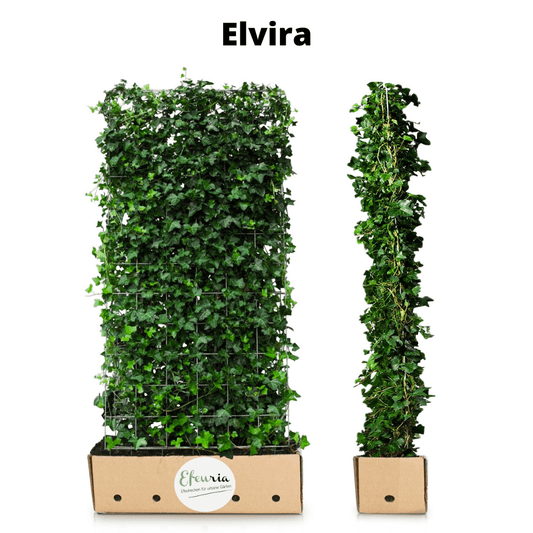Is ivy a shallow or deep rooted plant?
Share
Are you planning your garden and looking for a suitable hedge? Or are you building a house and want to create a beautiful garden at the same time? Then ivy could be the perfect choice for you! Ivy is not only an attractive and versatile plant, but also known for its deep root system. In this blog post, we'll take a closer look at the depths of the ivy root system and the root depth of ivy. You'll also find tips for planning an ivy-covered garden and learn about the importance of root depth for garden hedges. Dive into the fascinating world of ivy!
Is ivy a shallow or deep-rooted plant?
Ivy is a deep-rooted candidate for your garden hedge. With its root system extending far below the surface, it is able to firmly anchor itself in the soil and obtain sufficient nutrients. Unlike shallow-rooted plants, ivy can therefore survive well even in dry periods. The root depth of ivy can vary depending on soil conditions and climate. However, it typically reaches up to 60 cm and can reach even deeper in certain varieties. These deep roots play an important role in the plant's stability and its ability to cope with difficult locations.
Understanding the Depths of the Ivy Root System
A plant's root system is crucial for its growth and survival. Ivy's roots can reach impressive depths of up to 60 cm. These depths offer ivy several advantages. Firstly, they allow the plant to penetrate deep into the soil and thus obtain sufficient water and nutrients. Secondly, the deep roots ensure that ivy can survive even in dry periods, as it can access deeper moisture reserves. However, ivy's root depth can vary depending on soil conditions and climate, so it's important to consider these aspects when planning your garden.
Exploring the root system of ivy
Ivy is known for its extensive and dense root system. This root system consists of many thin roots that spread both horizontally and vertically through the soil. The horizontal roots allow the ivy to spread throughout the soil, thus ensuring stable anchorage. The vertical roots help absorb water and nutrients from deeper soil layers. This combination of horizontal and vertical roots enables ivy to colonize and grow successfully in even difficult locations. Furthermore, the root system ensures that the ivy is able to independently attach itself to surrounding structures such as fences or buildings.
How deep are the roots of ivy?
The root depth of ivy can vary depending on soil conditions. However, ivy roots typically reach a depth of 60 cm, and certain varieties can reach even deeper. These deep roots are an important factor in ivy's stability and ability to survive in difficult locations. The deep root system allows ivy to absorb sufficient moisture even during dry periods, ensuring its survival. However, it should be noted that the exact root depth also depends on the climate and water availability. In particularly dry soils, ivy may push its roots deeper into the soil to access water.
The importance of root depth for garden hedges
The root depth of ivy plays an important role when choosing a garden hedge. Thanks to its deep root system, ivy can easily cope with even difficult locations. This makes it particularly suitable for areas where other plants would not thrive due to drought or unfavorable soil conditions. Ivy's deep roots allow it to absorb sufficient moisture and nutrients for healthy growth. They also ensure the hedge is firmly anchored in the soil, which is particularly important in windy locations. Furthermore, ivy's dense root system helps minimize weed growth under the hedge, as it effectively competes with other plants.
We hope this blog post has given you some insight into the fascinating world of ivy and helps you plan your garden or home. For more information and tips on creating ivy hedges and green roofs , visit our website at Efeuria . Discover the diverse possibilities of ivy design and let your garden blossom!







